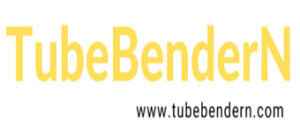A Comprehensive Look at Pipe Beveling Machine
- What is Pipe Beveling?
- What is Pipe Beveling Machine?
- The Function of Pipe Beveling Machine
- What Are the Common Pipe Beveling Machines on The Market?
- What Types of Pipe Beveling Machine Do We Have?
- How Does A Pipe Beveling Machine Work?
- Which Materials Can Be Beveled Using a Beveling Machine?
- Types of Pipe Beveling Ends
- Customized Options for Beveling Machine
- What Are the Advantages of CNC Pipe Beveling Machines?
- How Do I Choose the Right Beveling Machine for My Needs?
- What Should I Pay Attention to When Beveling Pipe?
- What Factors Affect the Working Speed of a Pipe Bevel Machine?
- How to Control the Pipe Beveling Speed?
- How to Choose the Pipe Beveling Tool?
- Common Beveling Angles
- How to Determine the Angle of a Beveling Tool?
- Importance of Pipe Beveling for Welding
- The Common Issues During Beveling Process and Their Solutions
Pipe beveling machine plays an important role in the oil and gas, construction, furniture, metalworking, automotive, and aerospace industries. These industries work a lot with metal pipes and require easy and precise connections. So, we will have a comprehensive look at the pipe bevel machine today.
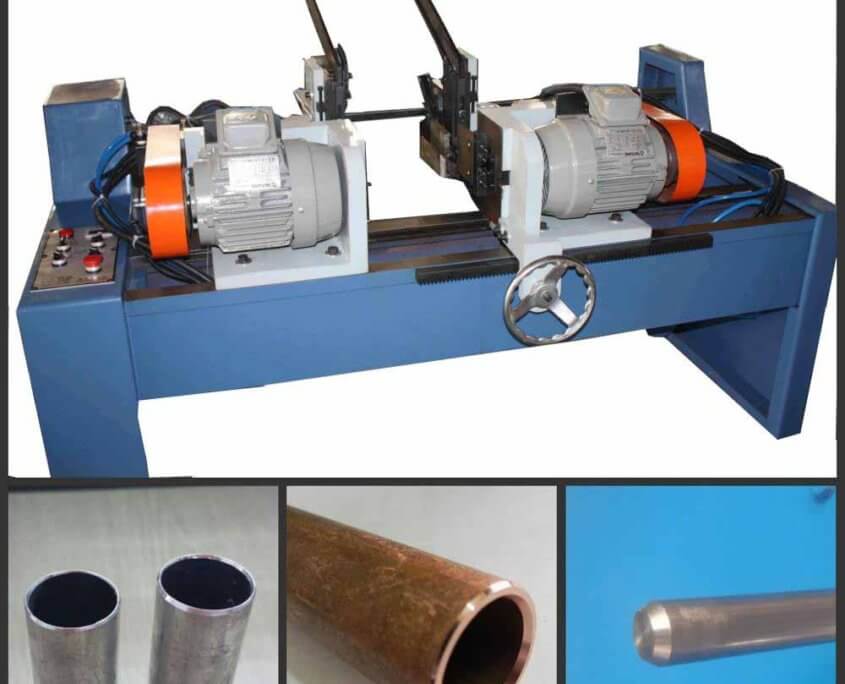
What is Pipe Beveling?
Pipe beveling means forming an angle at the end of pipe or tube. It is formed by removing the edge of the tube to a certain angle, this angle we normally called beveled end. This pipe bevel end is ready for welding and making joints.
What is Pipe Beveling Machine?
A pipe beveling machine is an equipment that smoothens the edges of a workpiece by removing burrs using a set of steel blades. Throughout the machining process, the workpiece is clamped and secured on the worktable. The motor drives the cutter head to rotate, allowing the cutting tools on the cutter head to come into contact with the workpiece and rotate, thereby achieving the beveling process on the edges.
The Function of Pipe Beveling Machine
- Addressing the issue of stress concentration in bearing steel.
- Removing burrs at the pipe end.
- Facilitates part assembly.
- Removing sharp edges for safety purposes.
What Are the Common Pipe Beveling Machines on The Market?
There are a few types of pipe bevel machine that can bevel the tube end to meet the industry request. But each of them has different features and can serve different industries.
Manual Pipe Beveler
- Power Source: Manual.
- Beveling Capacity: Smaller pipe sizes.
- Features: Portability, adjustable bevel angles.
- Application: Small-scale projects.
Electric Pipe Beveler
- Power Source: Electric.
- Beveling Capacity: Various pipe sizes.
- Features: Automated operation, precise beveling.
- Application: Medium to large-scale projects.
Pneumatic Pipe Beveling Machine
- Power Source: Compressed air.
- Beveling Capacity: Various pipe sizes, heavy-duty.
- Features: High torque, portability.
- Application: Offshore, remote sites.
CNC Pipe Beveling Machine
- Power Source: Electric.
- Beveling Capacity: Various pipe sizes.
- Features: Advanced automation, computer-controlled.
- Application: Complex and high production volume.
Hydraulic Pipe Beveling Machine
- Power Source: Hydraulic power.
- Beveling Capacity: Larger pipe sizes, heavy-duty.
- Features: High force, precise and controlled beveling.
- Application: Heavy-duty applications.
Please note: Pipe beveling machine itself is a customized machine, the parameters of the machine can vary according to your custom requirements. To customize your pipe beveling machine, please contact our expert.
What Types of Pipe Beveling Machine Do We Have?
TubeBenderN, as the manufacturer of pipe beveling machine in China, we supply single head pipe beveling machine and double head pipe beveling machine. Below each of them are some categories that belong to them, let’s take a look.
Double Head Pipe Beveling Machine
The double-head pipe beveling machine is divided into the long material type (processing length: 120-1000mm) and the short material type (processing length: 30-180mm).
Precision CNC Double-head Pipe Beveling Machine for Short Materials
The precision CNC double-head pipe beveling machine takes 3-6 seconds to finish one workpiece, and the processing length is 30-150mm. Also, it keeps the processing length accuracy, perpendicularity, and parallelism within 0.05mm.
The high-precision CNC beveling machine is normally used for high-precision products such as inner and outer steel tubes for automobile shock absorbers and small motor casings that demand high accuracy.
Precision CNC Pipe Beveling Machine for Long Materials
This machine features servo driven feed, servo length adjustment, automatic feeding, clamping, feed-in, retraction, unclamping, and discharge. It operates in an automatic cycle controlled by PLC, setting actions through the touchscreen interface.
This machine is suitable for beveling the inner angle, outer angle, and end face for round pipes and round bars in a single operation.
Processing length is 200-1000mm (can be customized), length accuracy: ±0.025mm.
Concentricity and perpendicularity are within 0.05mm
Pneumatic Double-Head Pipe Beveling Machine for Long Materials
This machine processing length is from 70-2000mm, needs 3-6 seconds to finish a workpiece, and length processing accuracy is ±0.1mm.
Hydraulic Double-Head Pipe Beveling Machine for Long Materials
This machine processing length is from 70-6000mm (customized according to each specific need) and needs 4-8 seconds to finish a workpiece.
Get your customized pipe bevel machine for your own project.
Single Head Pipe Beveling Machine
Single-head pipe beveling machines can be divided into pneumatic type and hydraulic type.
The two types of machines can process the tube diameter from φ20 – φ100mm (can be customized), takes 5-8 seconds to finish a workpiece, working accuracy is ±0.1mm. The main difference between the two is that pneumatic beveling machines are suitable for small and medium-sized workpieces, offering lower costs. Hydraulic beveling machines are better suited for larger and heavier workpieces with relatively higher costs. To determine the most practical option for your specific workpieces, you can consult our engineers.
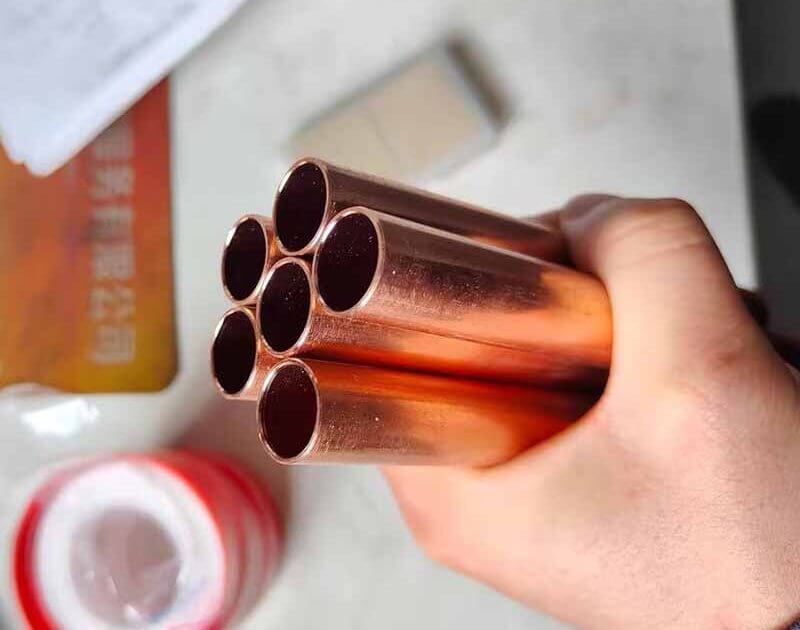
How Does a Pipe Beveling Machine Work?
- Adjusting Cutting Tools: Select the appropriate cutting tools based on the bevel specifications required for the workpiece, then proceed with installation and adjustment.
- Clamping Workpiece: Secure the workpiece onto the worktable, ensuring its stability and safety during the machining process.
- Adjust Parameters: Adjust the beveling machine’s cutting angle, cutting depth, and other parameters according to machining requirements.
- Start the Machine: Start the beveling machine to initiate the cutting system, then place the workpiece into the cutting area.
- Beveling Cutting: The cutting tool approaches the edge of the workpiece for cutting, shaping the edge to form a bevel.
- Finish the Process: Once finished beveling, stop the machine and then remove the beveled workpiece.
- Inspection: Checking the workpiece quality, including surface, beveled angle, beveled accuracy, etc to meet the request.
Which Materials Can Be Beveled Using a Beveling Machine?
Steel pipe, iron pipe, stainless steel pipe, aluminum pipe, copper pipe, plastic pipe, round pipe, solid bar. All these materials can be beveled on this machine. If you have any doubts about whether your product material or profile shape can be processed on our machinery, please consult with our engineer.
Types of Pipe Beveling Ends
Our pipe beveling machine is versatile in creating beveled pipe ends to fit for both welding and assembly, they can be divided into below types:
Inner Bevel/Chamfer
Inner bevel/chamfer means beveling/chamfering inside the tube end or workpiece end at the requested angle. This process is better for connection between tube parts.
Outer Bevel/Chamfer
Outer bevel/chamfer means beveling/chamfering outside the tube end or workpiece end at the requested angle. This process is better for tube parts connection, tube parts assembly, and tube parts welding.
Face End Bevel/Chamfer
Face end bevel/chamfer means beveling/chamfering tube end or workpiece end at the requested angle. This process is better for tube parts assembly, tube parts connection, or improving the exterior appearance.
Customized Options for Beveling Machine
- Working Capacity: Our standard pipe beveling machine working capacity can be from φ9mm-φ But this can be customized according to your request.
- Working Length: For the double head pipe beveling machine, the Max. working length is 1000mm. This is a common range and can be customized based on your needs.
- Clamping Device: The clamping device used to fix and secure the pipe needs to be customized according to your specific size.
- Pipe Beveling Tools: The pipe beveling tool that is used to make the pipe beveled edge also needs to be customized according to different bevel requests.
- Drive System: According to different materials, different sizes, and different processing accuracy requirements, the machine can choose to use pneumatic, hydraulic, or servo drive.
- Automatic Feeding Device: For double head pipe beveling machine, some customers will request for automatic feeding device. If you also need this function, you can tell our sales staff you want your machine to have this function.
What Are the Advantages of CNC Pipe Beveling Machines?
High Working Efficiency: It achieves automatic loading, improving the working efficiency.
High Productivity: Using CNC pipe beveling machine will double your production capacity.
Perfect Consistency: It ensures consistent beveling dimensions of the workpiece.
Easy Operation: This machine is very intelligent, any worker in your factory can handle it. One worker can oversee multiple machines.
High Accuracy: Compared with other types of beveling machine, the workpiece accuracy proceed on the CNC pipe beveling machine is higher than others.
Low Cost: Although the price of CNC pipe beveling machine is higher than other types of machines, your total cost will be lower. Such as, you don’t have to pay a lot to train the workers, and you can hire fewer workers to handle these machines. your productivity is higher than ever.
How Do I Choose the Right Beveling Machine for My Needs?
The best way to confirm which type of beveling machine meets your request is to contact our engineer, we will suggest the best fit machine or customize for you. You should also provide the below details to us.
Pipe thickness, pipe diameter, pipe length, pipe material, type of bevel, and type of machine (CNC or NC, semi-auto or automatic).
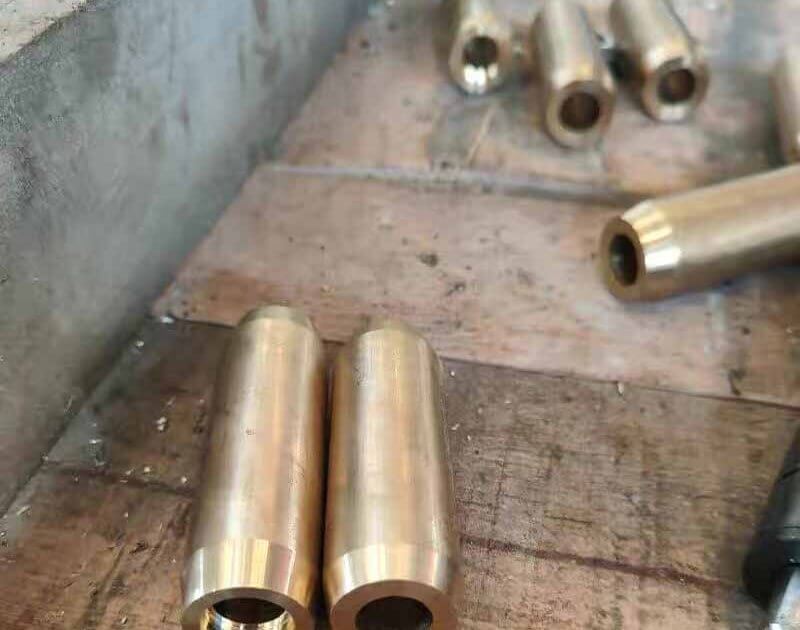
What Should I Pay Attention to When Beveling Pipe?
- Wear protective equipment such as goggles, gloves, etc.
- Choose the proper clamp device, and cutter head, according to the pipe that needs to be proceeded.
- Run the machine empty for 1 to 2 minutes, paying attention to each component for normal operation and checking for any air leaks in the hose. Only when everything is normal, then start to work.
- Test pipe beveling, put it into the machine manually, and check if the chip removal is normal. When manually adjusting the tools, remember to disconnect the air hose to ensure there is no air pressure.
- During operation, adjust the position of the baffle to prevent splashing of iron debris and potential injuries.
- If abnormal chips are detected, you should stop the machine immediately for the adjustment of the cutter head blades.
- After work, turn off the power. Clean the machine regularly.
What Factors Affect the Working Speed of a Pipe Bevel Machine?
Material Hardness: The harder the material, the slower the beveling speed. If your material is very hard, you will need more force to process, so the beveling speed is limited by mechanical force.
Material and Wear Level of the Cutting Tool: The material and wear level of beveling machine tools also affect the beveling speed. If the cutting tool material is harder, the beveling speed will be slower, since harder material needs more force to proceed. Additionally, the degree of tool wear also impacts the chamfering speed. Severely worn tools will reduce their processing capabilities, thus affecting processing efficiency.
Structure and Performance: The structure and performance of the beveling machine also impact the beveling speed. For instance, a higher motor power can provide a faster beveling speed. Also, higher tool rotation speed on the beveling machine will increase the beveling speed.
Processing Depth and Angle: The processing depth and angle also affect the beveling speed. A greater processing depth leads to a slower beveling speed, also a larger processing angle increases the chamfering speed.
How to Control the Pipe Beveling Speed?
There are 2 ways to control the pipe beveling speed on the machine, you can control the speed by adjusting the motor speed and adjusting the feed rate.
Adjust Motor Speed: The pipe chamfering machine is usually driven by a motor, so the chamfering speed can be controlled by adjusting the motor speed. Normally, the harder the material, the slower the beveling speed should be. This can avoid excessive tool wear or excessive heat generation on the workpiece surface.
Adjust Feed Rate: The adjustment of the feed speed can be completed through the control system of the beveling machine. There are two modes: manual and automatic. In manual mode, the operator can adjust the feed speed through the control buttons according to actual needs; in automatic mode, the beveling machine can finish the beveling process automatically according to the preset program, and the feed speed will also be automatically adjusted.
How to Choose the Pipe Beveling Tool?
When you are going to choose the proper tool to bevel the pipe, you need to consider below factors:
Material Hardness: The harder the material, the smaller the angle of the beveling tool should be.
Workpiece Shape: Different shapes of workpieces need different angles of the beveling tool.
Required Beveling Angle: Check the request to proceed with the beveling.
Roughness: Some clients have roughness requests on the workpiece surface.
Common Beveling Angles
Common bevel angles include 30°, 45°, 60°, 90°, and 120°, among others. Among these, 30° and 45° are the most commonly used angles, suitable for most machining materials and workpiece shapes. A 60° bevel angle is suitable for harder materials like steel. Bevel angles of 90° and 120° are ideal for larger workpieces and rougher machining surfaces.
How to Determine the Angle of a Beveling Tool?
- Use a calculator or a chamfer angle measuring tool to measure and calculate.
- Put the beveling tool on the workpiece surface and observe the angle between the bevel tool and the workpiece surface.
- Before mass production, having a test to see the beveling angle.
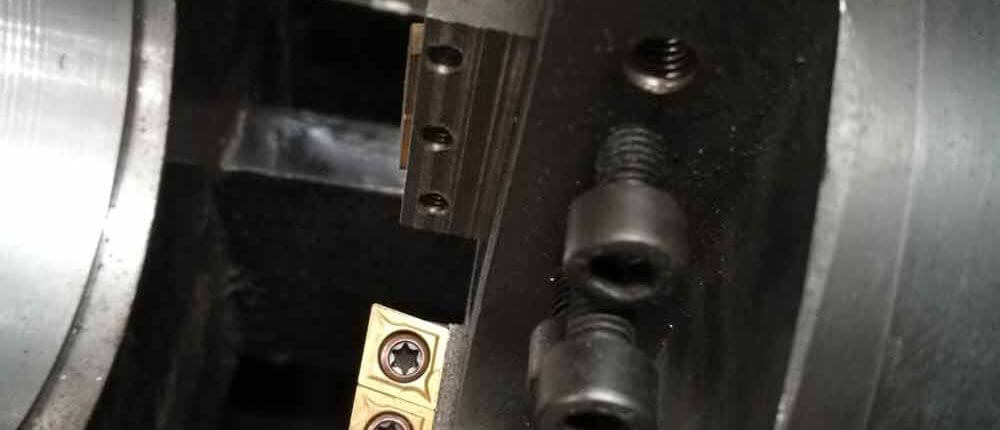
Importance of Pipe Beveling for Welding
Welding pipe beveling ends can remove the burrs, sharp edges, and sharp corners on welding joints to enhance their quality and safety. The significance of welding beveling end is improving the surface condition of welding joints, eliminating sharp edges, making welding joints smoother, and enhancing their tensile strength, wear resistance, corrosion resistance, and oxidation resistance.
Improving Welding Quality
Beveling helps eliminate burrs and incomplete fusion defects on welding joints, therefore reducing the occurrence of welding defects. Additionally, welding beveling ends improves the quality and strength of welding joints, raise their compressive resistance. It effectively lowers the failure rate of welding joints, thus enhancing welding quality and reliability.
Reduce Stress Concentration
Welding beveling end effectively reduces stress concentration, therefore alleviating stress and deformation on the welded joint. Additionally, it improves stress distribution on the welding joint and improves its load-bearing capacity and durability, thus extending the service life of the welded joint.
Enhance Welding Strength
Welding beveling end effectively increases the strength and hardness of welded joints and improves their tensile strength and toughness. It also improves the surface condition of welded joints, and enhances their adhesion and wear resistance, thereby effectively preventing cracks and detachment in welded joints.
Extend Material Lifespan
Welding beveling end effectively prolongs the material’s lifespan, reducing maintenance and replacement costs. It enhances the material’s surface condition, improving its corrosion resistance and durability, thereby effectively extending the material’s lifespan.
The Common Issues During Beveling Process and Their Solutions
Common Issues: The double head beveling machine is off-center, resulting in one side of the bevel being larger than the other.
The Solutions: ① Check if the workpiece outer diameter matches the fixture size of the machine. ② Adjust the clamping die seat position to ensure concentricity with both machine heads.
Common Issues: The beveling machine produces inconsistent bevel lengths.
The Solutions: ① For a CNC double-head chamfering machine, check if the set parameters are correct, ensure there is no looseness in the connection shaft between the ball screw and the servo motor, and verify that the locking screws of the linear guides and machine heads are tight. ② The pneumatic and hydraulic double-head chamfering machines rely on the feed stroke to control the length. Significant length discrepancies may occur if the feed stroke hasn’t reached its limit. Check if the feed position reaches the bottom before retracting. You can adjust the feed timing or delay to ensure that the feed cylinder or pneumatic cylinder pauses for 0.5 seconds at the end of each stroke before retracting.
Common Issues: The beveling machine operates normally in manual mode but does not function in automatic mode.
The Solutions: In this situation, it’s often due to the displacement of limit switches or magnetic switches, which fail to receive signals. Typically, the operational flow of the chamfering machine in automatic mode is as follows: Upon starting the automatic mode, the initial action involves the forward movement of the material-pushing cylinder. Once it reaches its position, a brief illumination of the signal light on the material-pushing cylinder sends a signal to commence clamping. The clamping stroke switch engages the feed. The feed is usually set for 1-3 seconds before retracting. Following retraction, another illuminated signal light indicates the start of the cycle for the next workpiece. If any of these actions fail to occur, it’s advisable to check the preceding sensors or stroke switches for proper signal reception and adjust their positions if needed. If adjusting them doesn’t resolve the issue, further inspection is needed: check if the sensor is not illuminated, and if so, consider replacing it. If the sensor is illuminated but doesn’t trigger an action, inspect and potentially replace the relay.
Common Issues: The beveled surface is not smooth.
The Solutions: ① Choose different tools based on different materials. For instance, for aluminum, opt for sharp-edged blades. ② For soft iron materials, use high-speed machining, while for hard materials, use low-speed machining.
Common Issues: Chamfering tool shaking and eccentricity.
The Solutions: ① To troubleshoot eccentricity, check if the fixture is worn or excessively worn, whether there’s any change in the workpiece’s outer diameter, and whether it deviates significantly from the fixture size. ② To address the tool shaking issue, inspect whether the bearings are damaged or loose, if the main spindle copper sleeve is worn, or if there’s excessive clearance between the main spindle.
Common Issues: The beveling machine doesn’t respond when powered on.
The Solutions: ① Check for loose power connections and verify if the internal circuit breaker is turned on. ② Check if the power input to the display screen is normal and inspect whether the power supply to the display screen is loose. ③ The mechanical parts are jammed. Check if the machinery is in operation, then readjust the installation.
Common Issues: The pipe chamfering machine is making a lot of noise.
The Solutions: ① The chamfering machine isn’t running on a flat surface. Adjust the machine’s position. ② The clamp is loose. Stop the machine and tighten the locking screws to ensure the chamfering machine clamps the workpiece securely.
Click here to see more studies about pipe beveler machine.
Looking for the best pipe beveling machine in China? For welding, joint connection, and pipe end deburring purposes? TubeBenderN, as one of the best factories of pipe beveling machines in China with experienced customer service is your best choice!
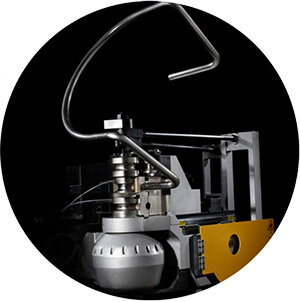
Denis Lau
Denis Lau has 20 years of work experience in the metal processing industry. His major in university was mechanical engineering, and after graduation, he started from the bottom of the workshop, gaining extensive hands-on professional experience and the ability to tackle challenges from various industries.
